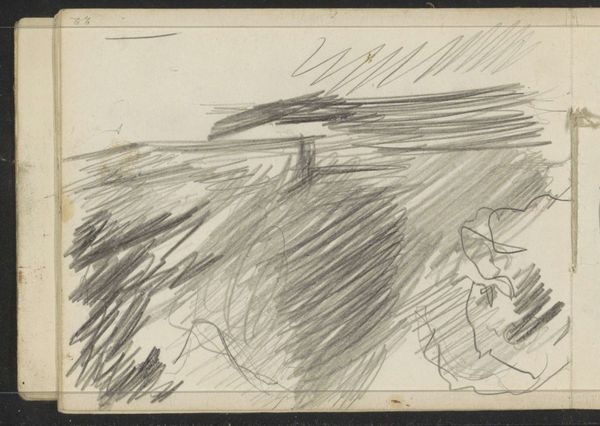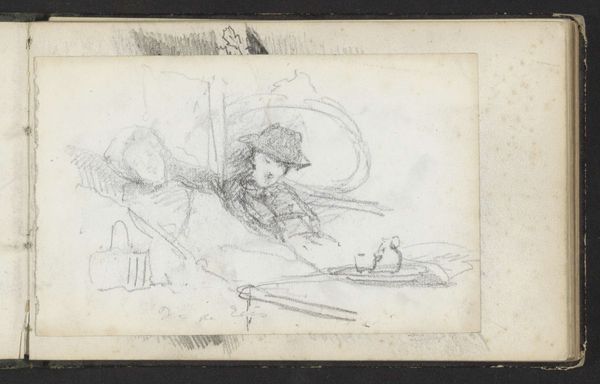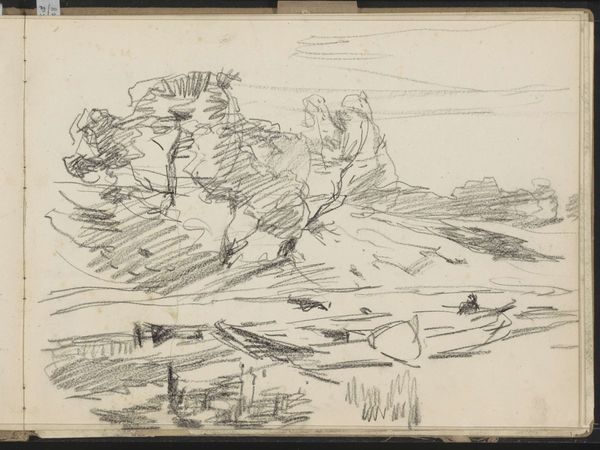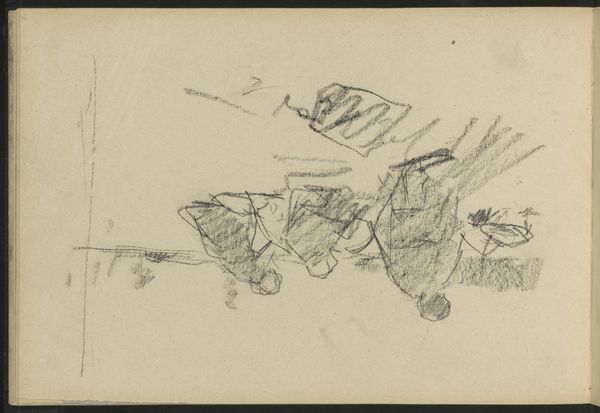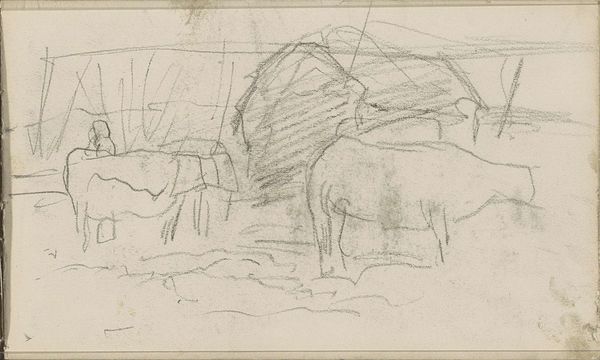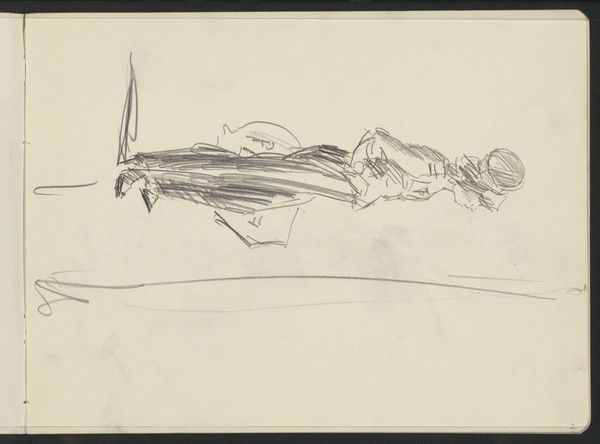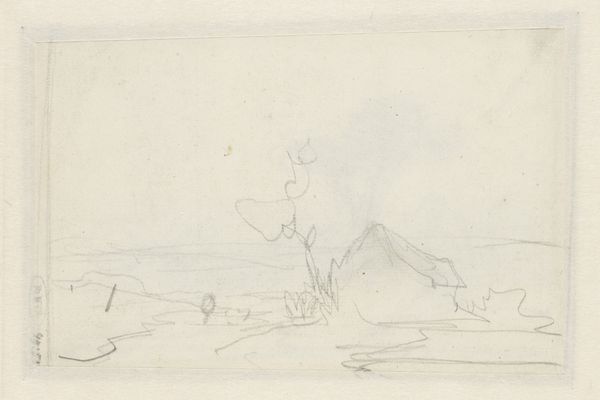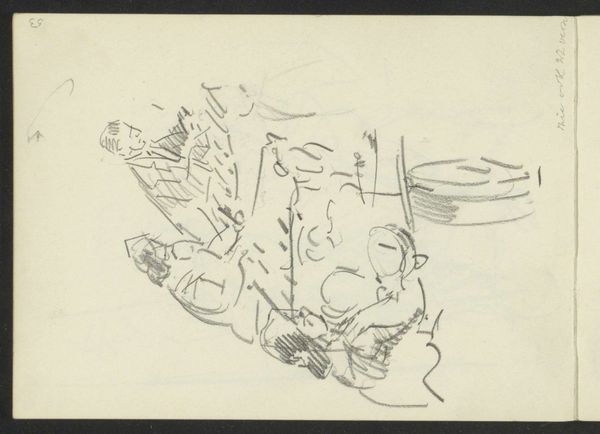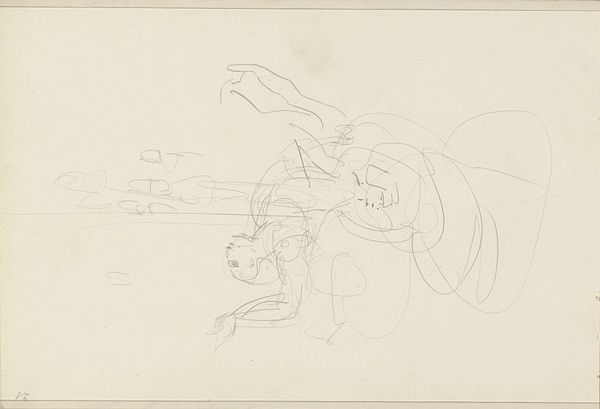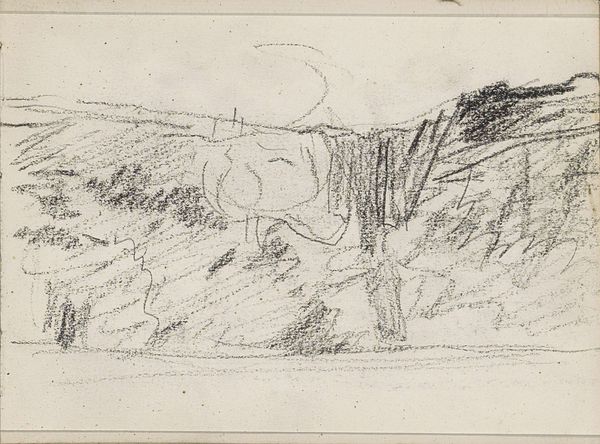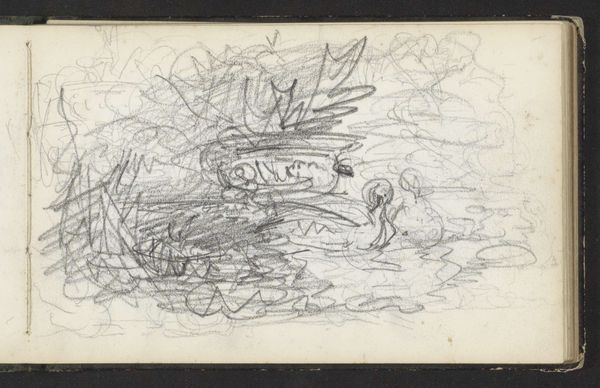
drawing, pencil
#
drawing
#
landscape
#
pencil
#
realism
Copyright: Rijks Museum: Open Domain
Curator: This sketch, dating roughly from 1883 to 1922, is entitled "Landschap met een molen en een zeilboot," or "Landscape with a Mill and a Sailboat," by Johanna van de Kamer. Editor: It feels ephemeral. All soft pencil strokes, like a memory fading at the edges. There's a distinct lack of detail; just impressions of a landscape. Curator: True. Note the emphasis on process here. It's a humble pencil drawing, likely from a sketchbook. This intimate scale emphasizes the immediate, unfiltered gesture of the artist engaging with the landscape. Think of the cost of materials, too--pencil and paper allowing relatively unfettered access to artistic expression for emerging female artists like van de Kamer, without requiring extensive studio space or the expense of oils. Editor: And what about the social context of windmills and sailboats at that time? Were they ubiquitous features of the Dutch landscape, representative of progress, or symbols of something more complicated, perhaps a vanishing way of life in the face of industrialisation? Whose labor kept those mills grinding? And whose leisure was spent sailing? I think, from a feminist perspective, how van de Kamer has captured this scene also brings to the forefront what might not be represented. Curator: Certainly. The lack of detail prevents specific contextual grounding. Consider how van de Kamer used the most fundamental tools—a graphite pencil and paper. The labor of producing and distributing those materials themselves involved a global network of trade and resource extraction. Editor: Looking closely, the soft shading does give it a dreamy quality. Almost idyllic, masking what this time really represents; a complex period when ideas about class and gender were evolving. This perspective reminds us to ask critical questions about the stories such pastoral images might be concealing. The history of Dutch landscapes, especially from a decolonial perspective, can often flatten any complexity and nuance. Curator: Ultimately, van de Kamer's choice to render the landscape with such simplicity opens the door to complex layers. By acknowledging the role of accessible materials and the drawing's relationship to mass production, it deepens our understanding of not only its creation but also its legacy. Editor: Absolutely. The act of sketching is itself an intervention. Reflecting on who gets to create images and how the landscape itself is shaped by power allows us to engage critically with what is on view and, importantly, with what is absent.
Comments
No comments
Be the first to comment and join the conversation on the ultimate creative platform.

